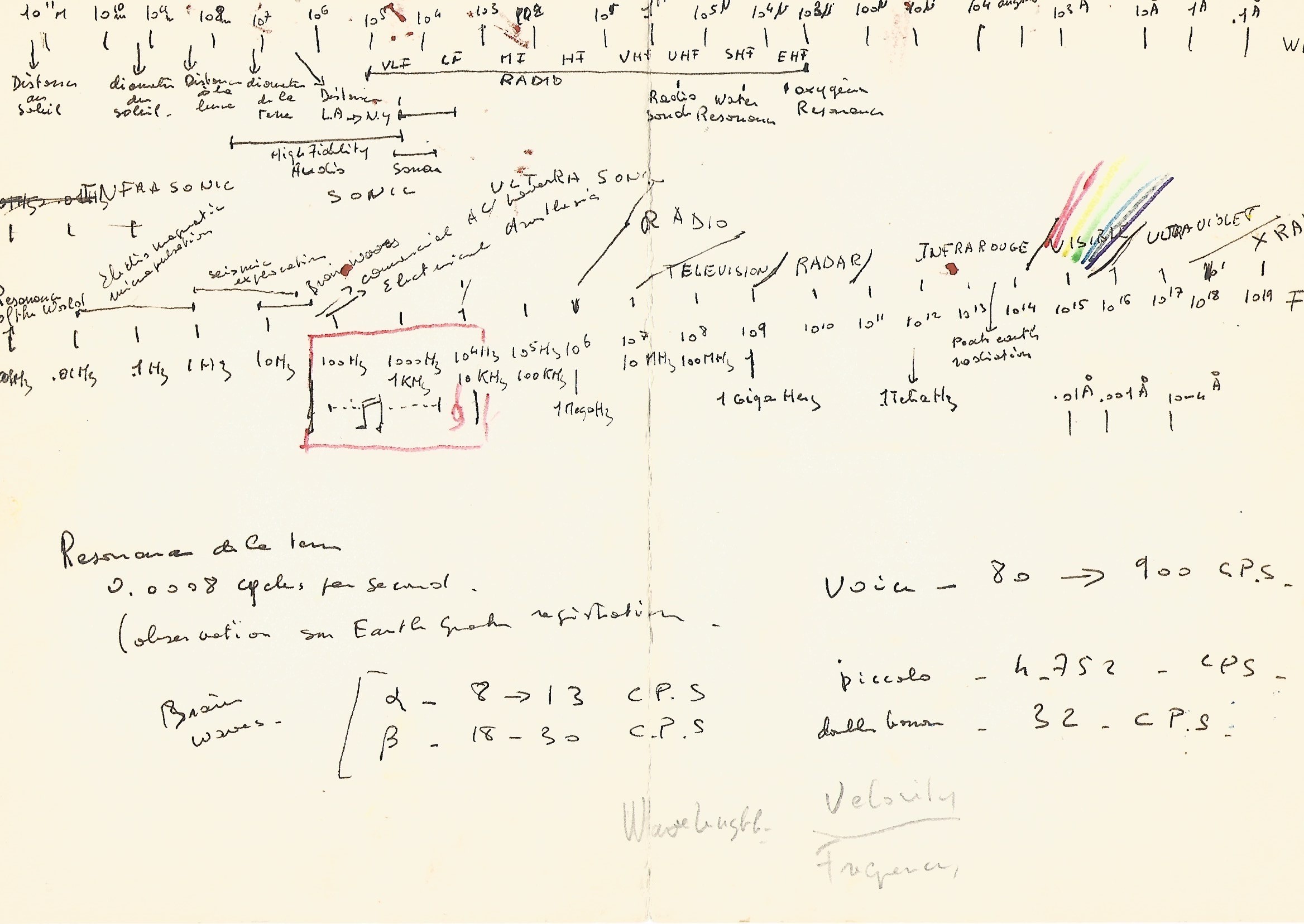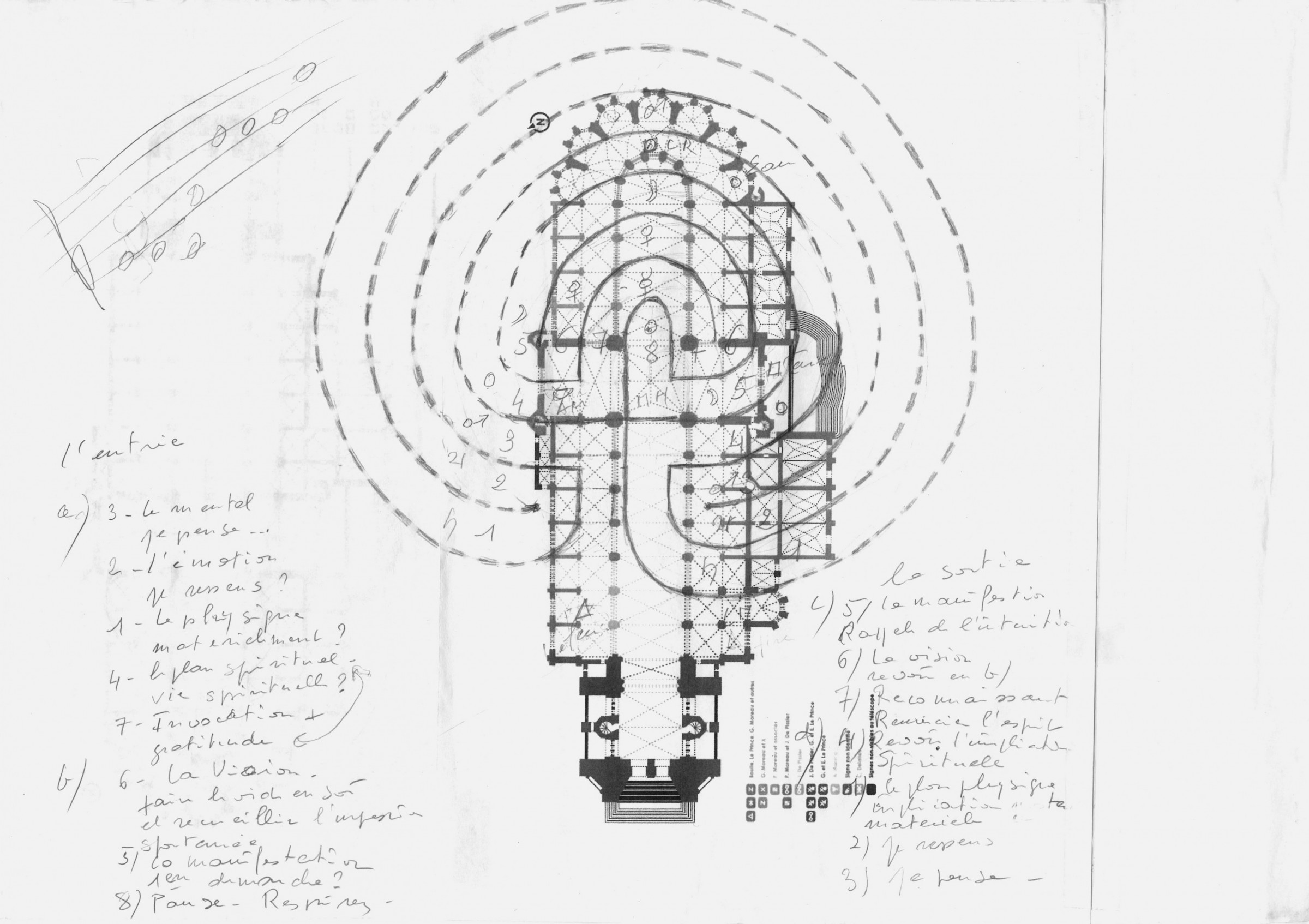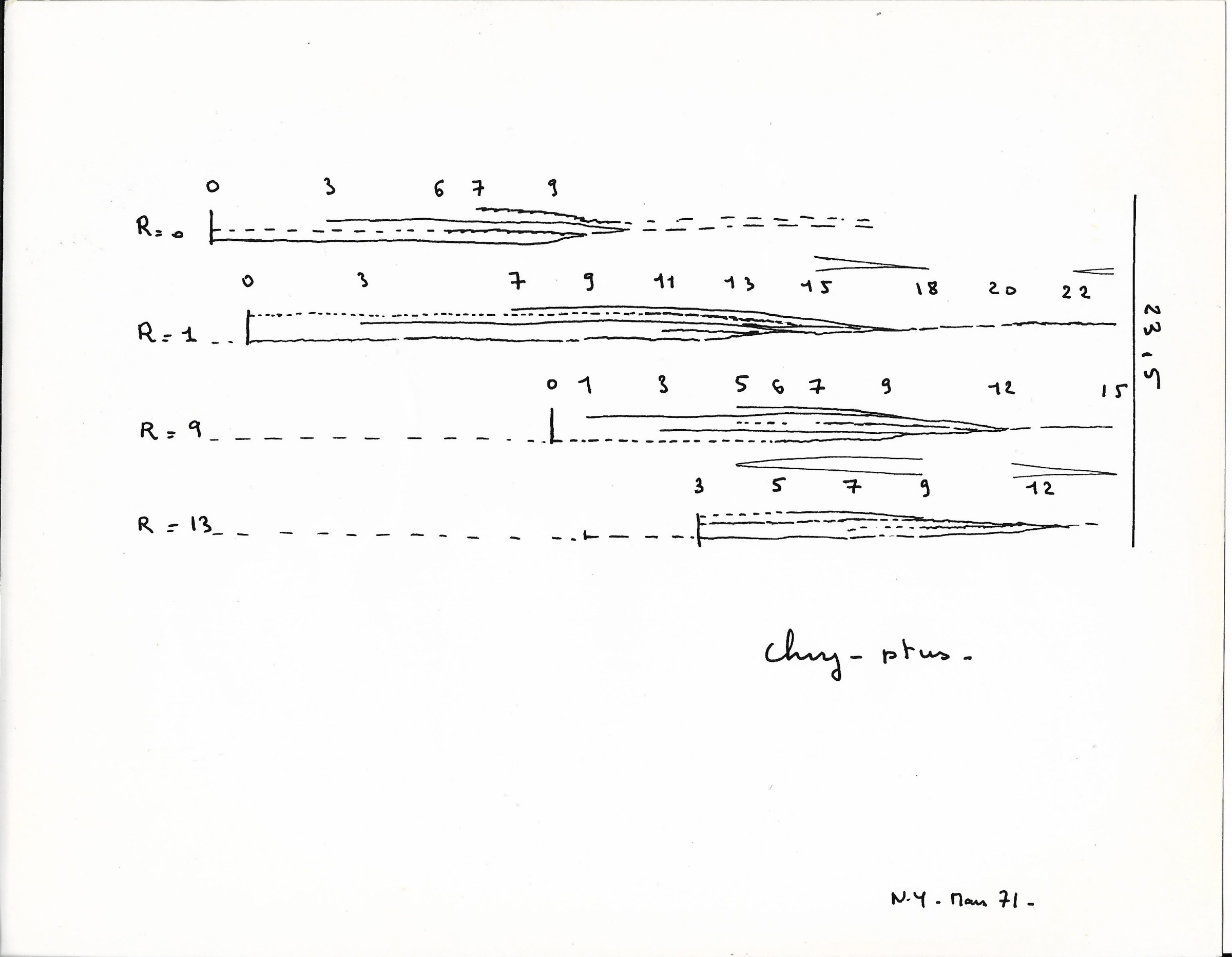The Music of Éliane Radigue

Drawing depicting the Île de la Cité, conceived as a wander through time, in the heart of Paris, from Lutetia to the present day.
Strongly linked to the intimate geography of Éliane Radigue’s childhood, she submitted it as a prompt for musicians to explore
for the realization of Occam Hexa I (2013).

Excerpt from a drawing Éliane Radigue featuring the spectrum of electromagnetic waves, primary inspiration for the Occam Océan cycle (circa 2011).

Labyrinthe Sonore proposal for the Saint Waltrude Collegiate Church in Mons, Belgium (circa 2005, not realized). The concept of this work dates back to 1970, but it would only be realized for the first time in 1998 with the musicians and students of Mills College in Oakland.

Score for Chry-ptus, New York (1971)

Score for 7th Birth, one of the first compositions for the ARP 2500 synthesizer (1970)
-
Related prizes
- Arts
Éliane Radigue’s music is delicate, quiet, slow, on the cusp of immobility. It is a music of shades, difficult to describe with musical vocabulary. Its characteristics are sustained sound and low volume, with silence present as the place from where sound emerges. It is music which provides listeners with a perspective on sound’s inner life.
Many of Radigue’s pieces have a long duration; microscopic observation of the subtle interactions of sound-phenomena needs time to develop at its own pace. Her music has often been compared to drone music, yet although both share the use of sustained sound and duration, their purposes are fundamentally different. Drone is static, a sonic presence, whereas Radigue’s compositions are defined in time and always contain a development, as minimal and barely-perceivable as it might be. While observing the behaviour of sound making its own music, we also observe our own perception mechanisms.
This music sharpens senses. At first, melody, rhythm and tempo seem to be absent but, listening closely, they are in fact inherent to the sound itself. Melodic motifs emerge from the movement of harmonics; beats rise out of interferences and draw polyrhythmic patterns. This music does not demand the listener feel anything, nor react in any specific way. Nothing is imposed; the listener has the freedom to accept it and get involved, or not. The composer concentrates her responsibility on the sounds and the creation of the most immersive listening situation. (...)
Radigue’s attitude towards composing is that of an observer, a researcher, a learner, which, within the field of music, is the position of the listener. Composition, for Radigue, has been an excavation-process towards an understanding of “what the sounds are telling me.” The conclusion was that it is sufficient to give them a frame and unnecessary to force them into shape. She has always maintained a respectful and attentive attitude; a fascination for the ephemeral, transitory and opaque. She accepts sound as it is, including its fragility, failures and accidents, which indeed have especially fascinated the composer: “I considered sound as an autonomous life that needed to be respected.”
Extract from Eliane Radigue - Intermediary Spaces
by Julia Eckhardt, umland editions, 2019
Éliane Radigue recieved the Special Mention of the Jury of the Evens Arts Prize.
Read more
Éliane Radigue’s music is delicate, quiet, slow, on the cusp of immobility. It is a music of shades, difficult to describe with musical vocabulary. Its characteristics are sustained sound and low volume, with silence present as the place from where sound emerges. It is music which provides listeners with a perspective on sound’s inner life.
Many of Radigue’s pieces have a long duration; microscopic observation of the subtle interactions of sound-phenomena needs time to develop at its own pace. Her music has often been compared to drone music, yet although both share the use of sustained sound and duration, their purposes are fundamentally different. Drone is static, a sonic presence, whereas Radigue’s compositions are defined in time and always contain a development, as minimal and barely-perceivable as it might be. While observing the behaviour of sound making its own music, we also observe our own perception mechanisms.
This music sharpens senses. At first, melody, rhythm and tempo seem to be absent but, listening closely, they are in fact inherent to the sound itself. Melodic motifs emerge from the movement of harmonics; beats rise out of interferences and draw polyrhythmic patterns. This music does not demand the listener feel anything, nor react in any specific way. Nothing is imposed; the listener has the freedom to accept it and get involved, or not. The composer concentrates her responsibility on the sounds and the creation of the most immersive listening situation. (...)
Radigue’s attitude towards composing is that of an observer, a researcher, a learner, which, within the field of music, is the position of the listener. Composition, for Radigue, has been an excavation-process towards an understanding of “what the sounds are telling me.” The conclusion was that it is sufficient to give them a frame and unnecessary to force them into shape. She has always maintained a respectful and attentive attitude; a fascination for the ephemeral, transitory and opaque. She accepts sound as it is, including its fragility, failures and accidents, which indeed have especially fascinated the composer: “I considered sound as an autonomous life that needed to be respected.”
Extract from Eliane Radigue - Intermediary Spaces
by Julia Eckhardt, umland editions, 2019
Éliane Radigue recieved the Special Mention of the Jury of the Evens Arts Prize.
Read more
-
Related prizes
- Arts